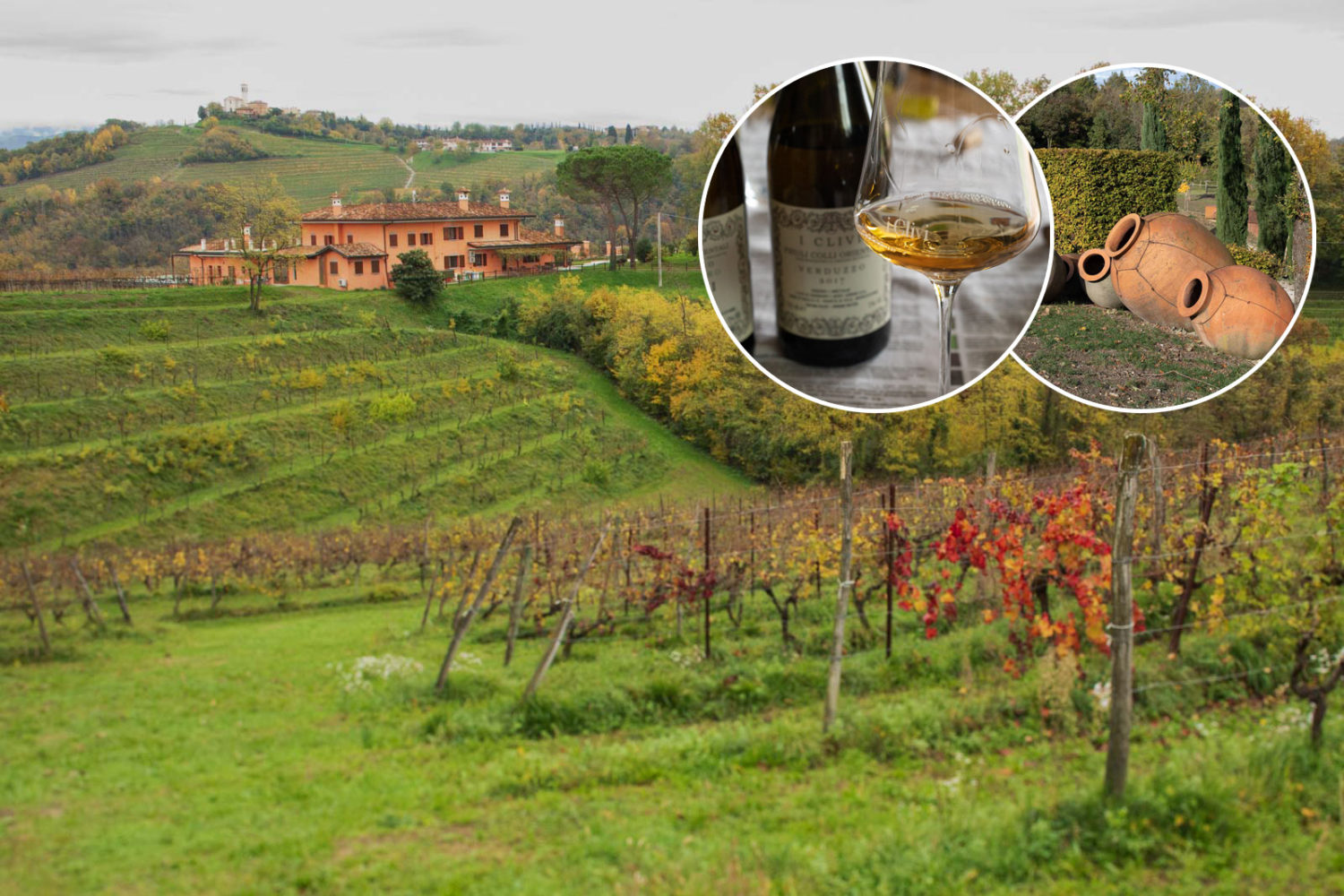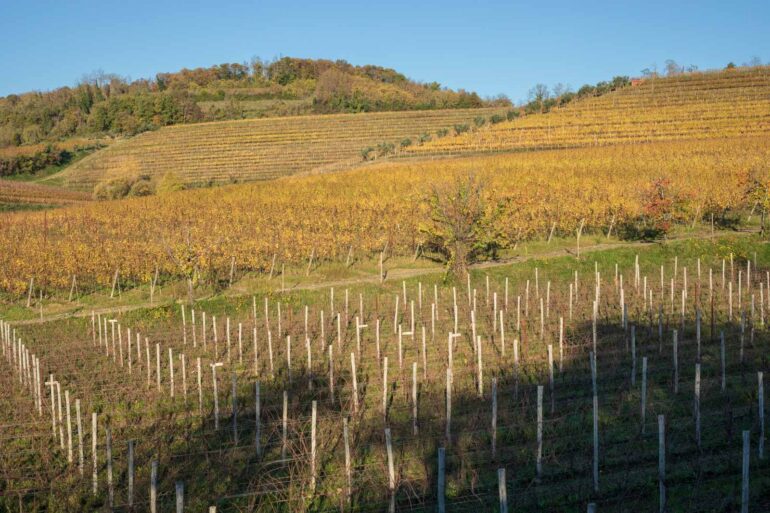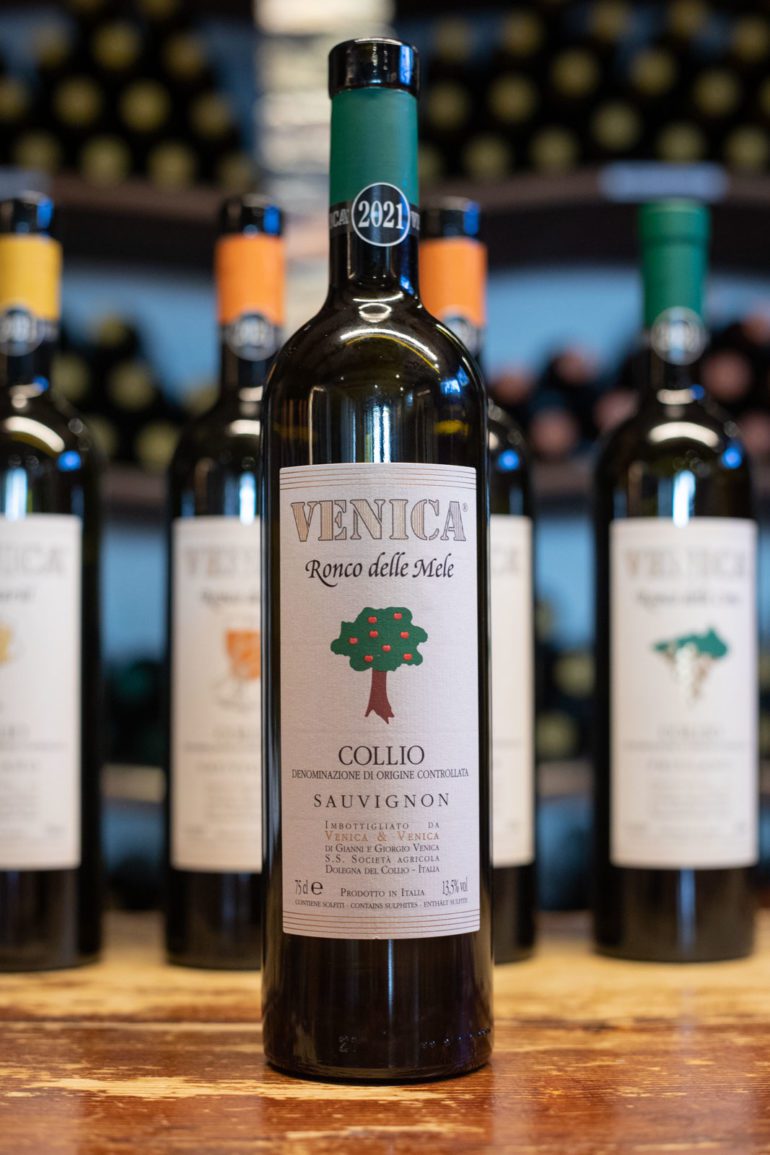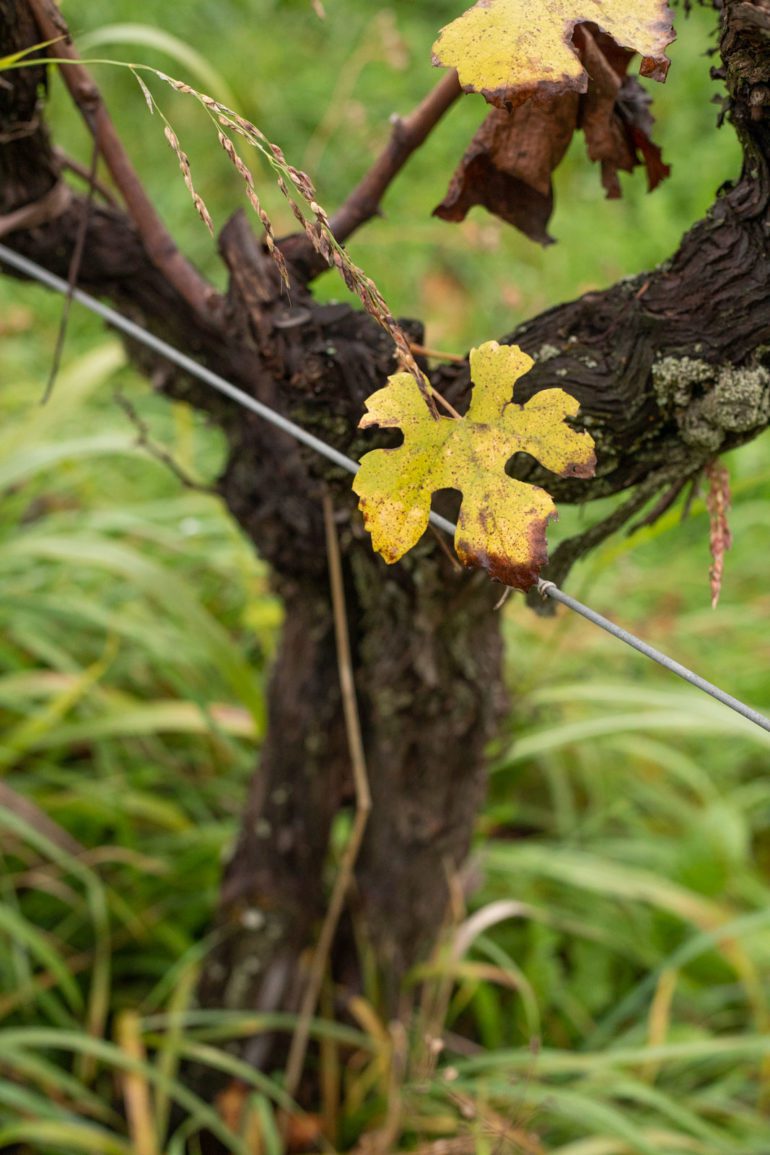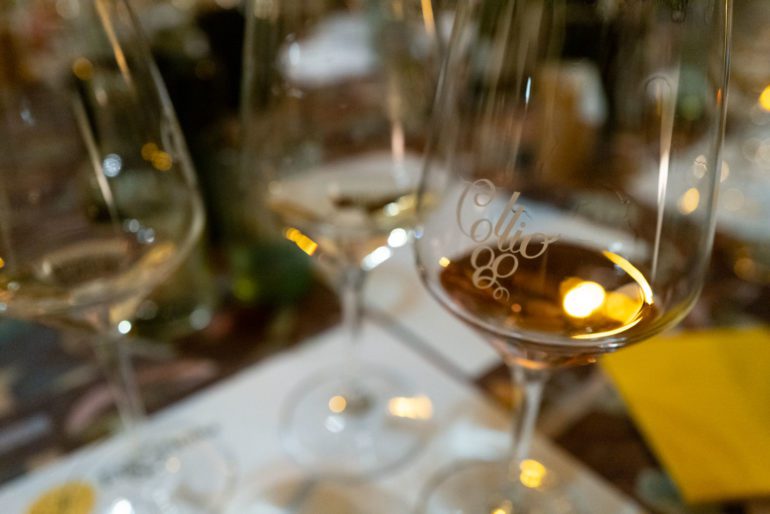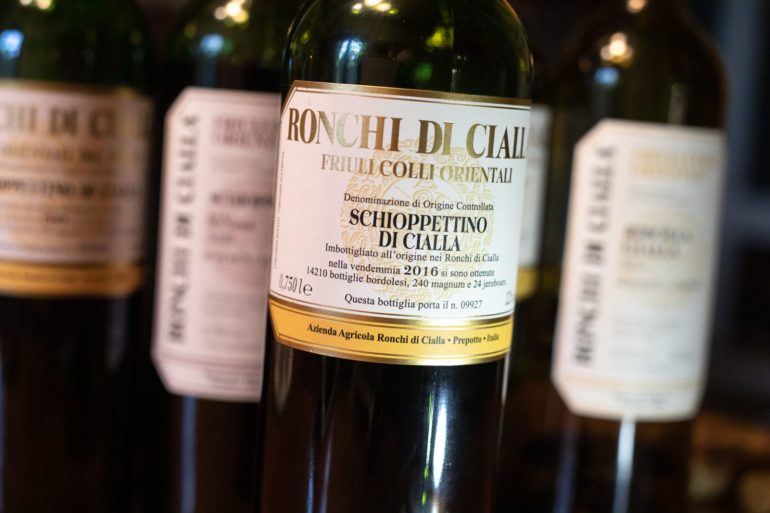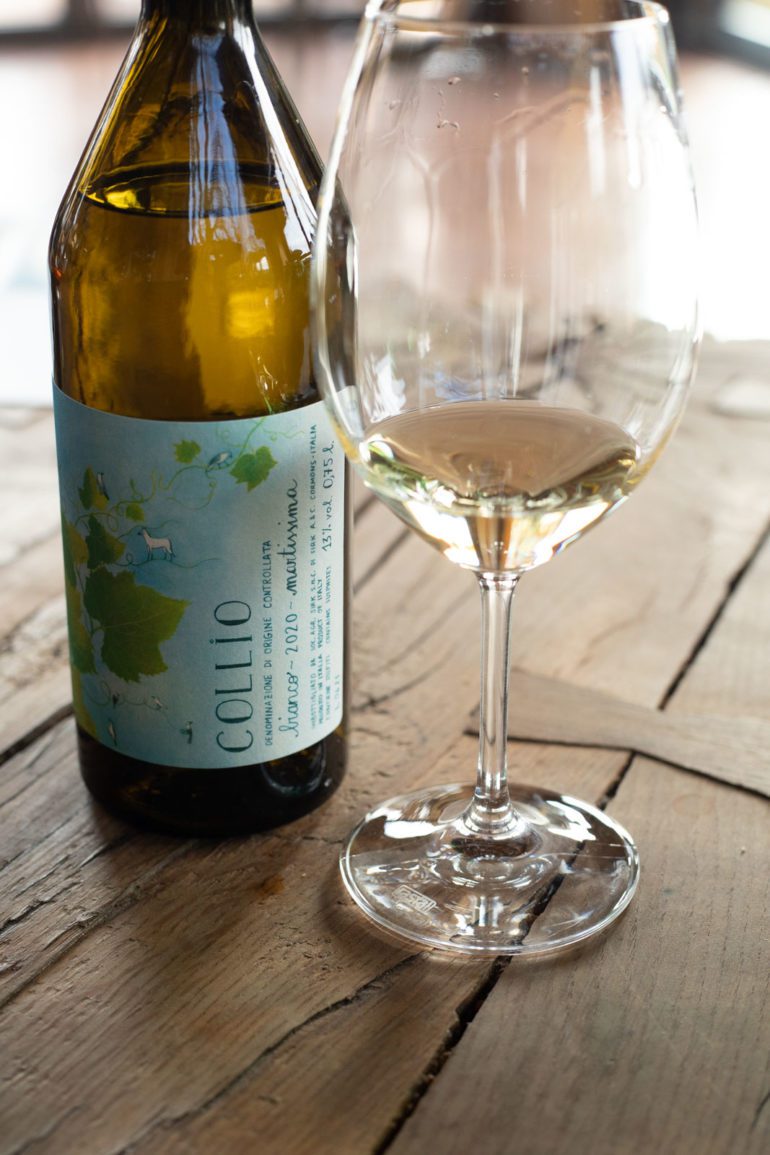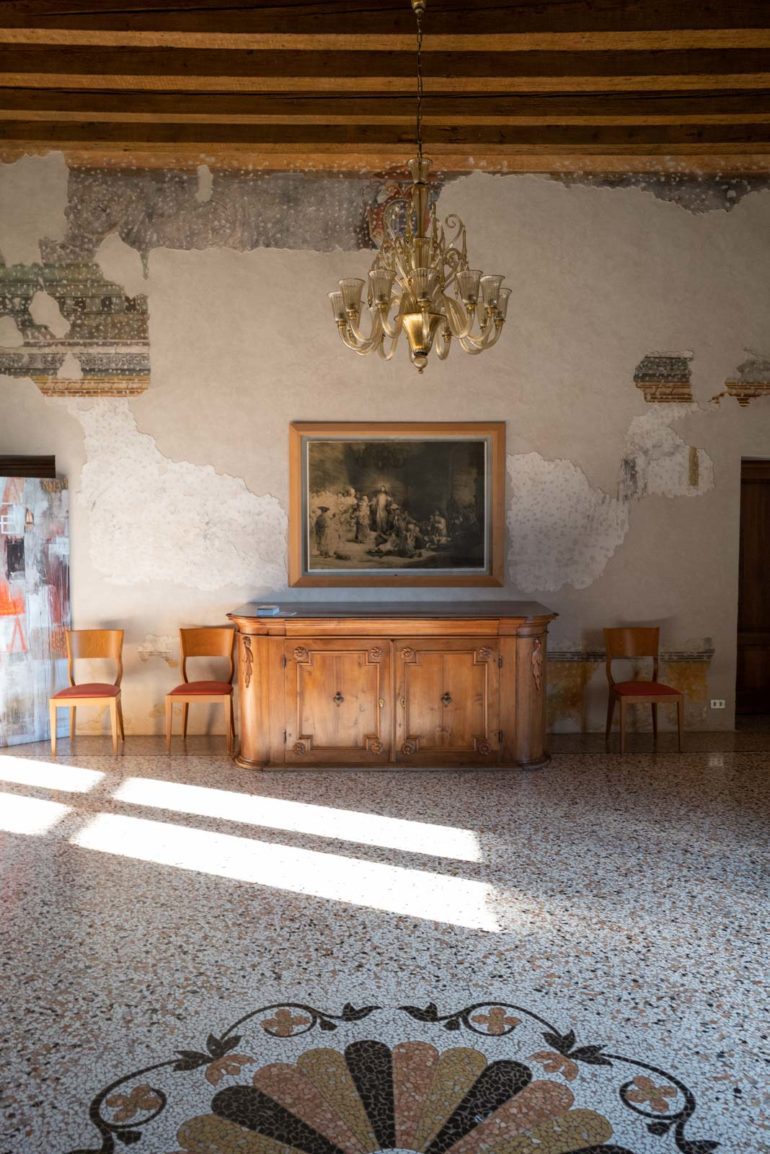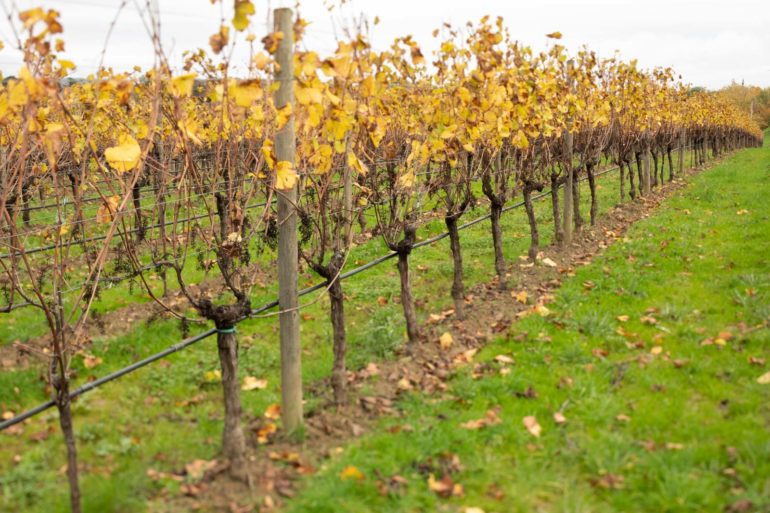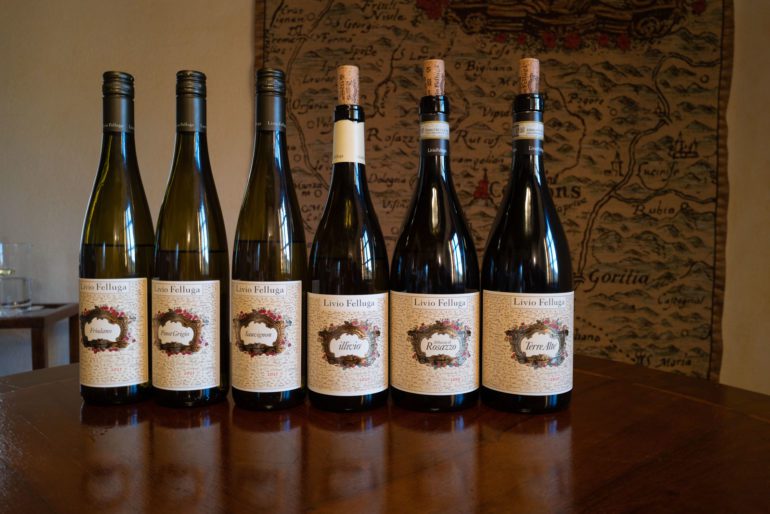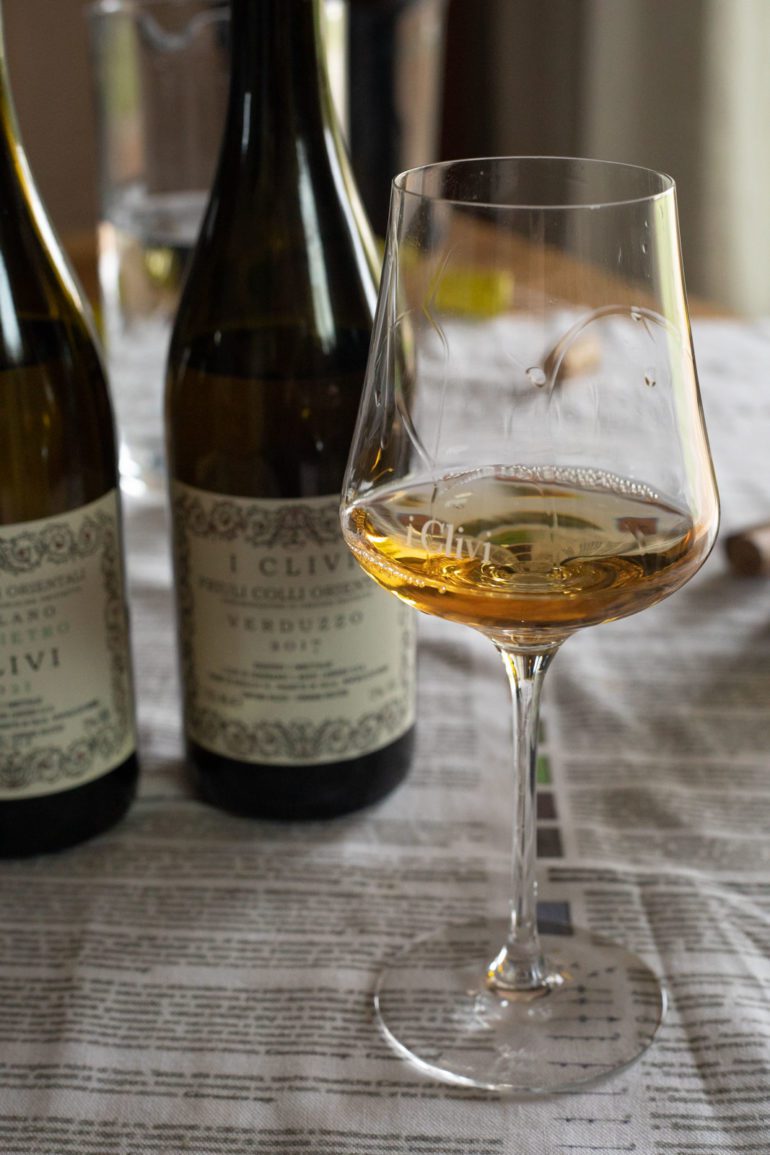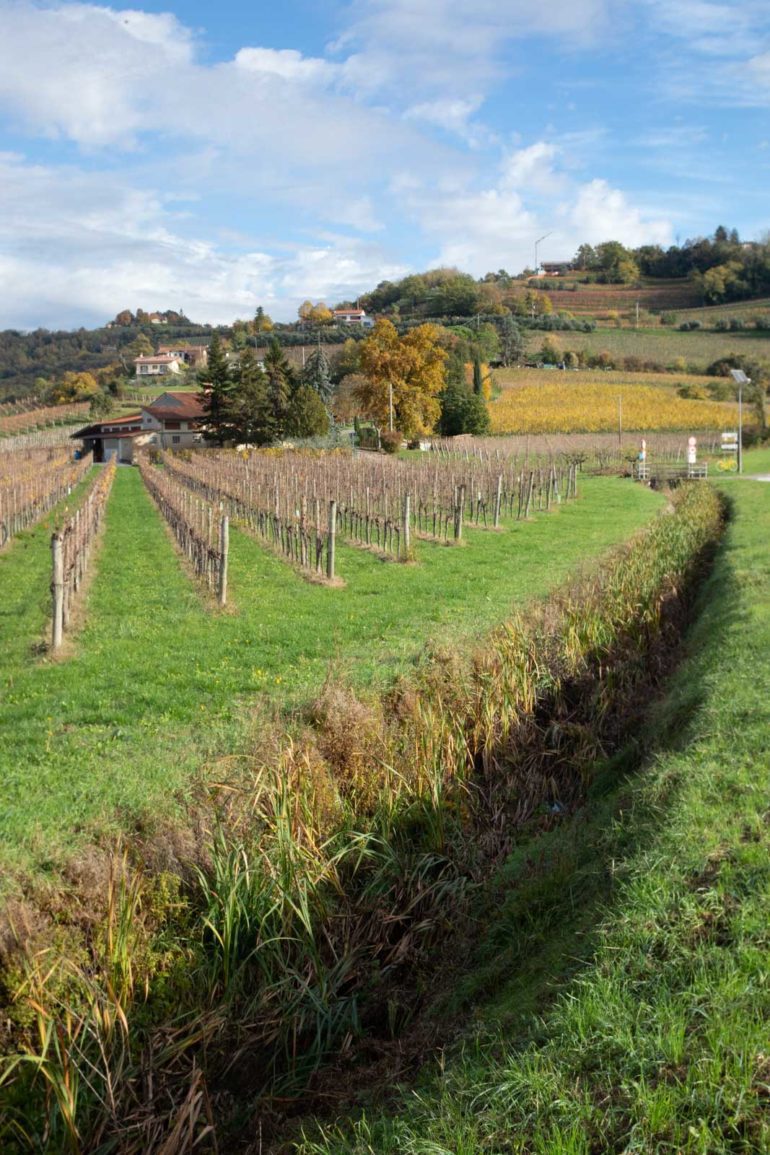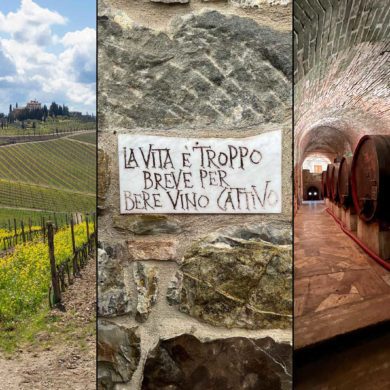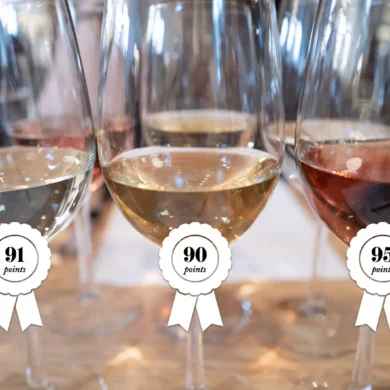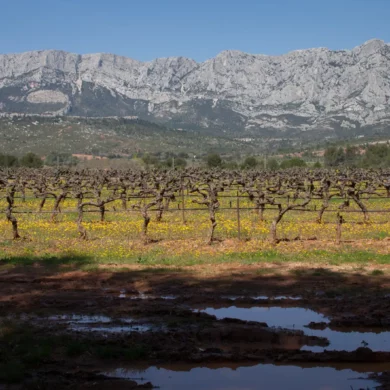In terms of fine wine, other regions in Italy have more cachet, more volume and even (one could argue) more variety. But is there an Italian region with a better track-record for all shades of wine than Friuli-Venezia Giulia? The white wines are consistently brilliant, the red wines are full of character and elegance, and no one outside of the Republic of Georgia has a better track record with amber wines (aka “orange wines”) than here. And while rosé is not a big deal in these parts, Ramato Pinot Grigio easily steps into the same role with aplomb. All that’s missing from Friuli is world-class sparkling wine (although there is Prosecco in these parts).
On Sunday, March 5 at 8pm EST / 5pm PST, we will embark on a journey across Friuli’s viticultural heartland: the Collio DOC and Friuli Colli Orientali DOC, two large appellations with an enormous amount of variety.
As we work our way across this landscape, we will pause to taste and discuss three different wines: a Friulano, arguably the most important native white grape; a Sauvignon Blanc, because Friuli is consistently a “world beater” with this grape; and finally, a wild card: either a macerated white wine (i.e. “amber” or “orange wine”) or a red from Schioppettino, Refosco or Merlot (again, an international grape where Friuli excels).
Filled with photographs, maps and consumer-friendly insights on wine, this high-end presentation is one you won’t want to miss if you love Italian wine. Below you will find the Zoom credentials as well as a Buyer’s Cheat Sheet on buying the wines.
Navigate This Study Guide
Zoom Credential
Topic: Why You Need to Know About the Wines of Friuli
Time: March 5, 2023 08:00 PM Eastern Time (US and Canada)
Buyer’s Cheat Sheet to Friulian Wine
Friuli-Venezia Giulia covers more than 3,000 square miles of northeastern Italy, with the Carnic and Julian Alps covering the northern half. Viticulture can be found throughout the southern half, with the western plains near Venice being favorable for larger-scale wineries and Prosecco production (only Friuli and Veneto can lay claim to Prosecco).
Things get interesting within a narrow and long strip of land that runs from Ramandolo in the north to the city of Trieste in the south. These foothills to the Alps offer a sweet spot for wine grapes: the tension between the mountains and the Adriatic Sea, the well-draining soils and the heritage of grape-growing all lend ideal conditions for fine wine. Yet within this zone, the variety is massive.
In our class we will focus on two of the most productive fine-wine appellations: the Collio DOC and Friuli Colli Orientali DOC. This is not only because these two DOCs make noteworthy wines of impressive elegance, but also because I think you will have the easiest time finding wines from these two appellations. It is also where I spent eight days in November.
But don’t limit yourself! Your wine shop might feature an outlier from the Rosazzo DOCG, Carso DOC or Venezia-Giulia IGT (the latter of which is often used by amber wine producers). Because of its border with Slovenia, Friuli is truly cross-cultural, and some wineries own vineyards on both sides of the divide, especially in Collio and its neighboring Slovenia district of Brda. There is a strong likelihood in the coming years that we will see more European Union Wines covering blends from vineyards on either side of the border.
Both the Collio and Friuli Colli Orientali DOCs allow several different types of wines. Bianco indicates a blend of white grapes. Rosso indicates a blend of red grapes. The word ramato is often added to the end of longer macerated Pinot Grigio wines to describe the onion skin color that comes from the process. Outside of that, most macerated white wines are filed under the Venezia-Giulia IGT.
Beyond this nomenclature, you’ll mostly find varietal wines whereby the variety is included on the label (e.g. Collio Sauvignon). The two appellations have a great deal of overlap, but here’s what you’ll find from each:
Collio’s Grapes
- Friulano
- Ribolla Gialla
- Malvasia Istriana
- Chardonnay
- Sauvignon (they drop the Blanc in Friuli, but its the same grape)
- Pinot Grigio
- Pinot Bianco
- Merlot
- Cabernet Franc
- Cabernet Sauvignon
Friuli Colli Orientali’s Grapes
- Same grapes listed above [minus Chardonnay]
- Picolit
- Verduzzo
- Refosco dal Peduncolo Rosso
- Schioppettino
- Pinot Nero
Buying guidance for specific wines can be found below. I will say this: because of the enormous variety found in Friuli, I am having to pass over some very noteworthy grapes and the wines they yield. Chiefly, Ribolla Gialla as a white wine, and dry Verduzzo, which is exceedingly rare but can be utterly spectacular and age-worthy. The Carso DOC also provides some exciting wines worth checking out, particularly from the local grape, Vitovska.
Friuliano
We will go into Friulano in-depth during the class, but we also covered this grape extensively in our recent First-Taste Guide to Friulano. While debatable, this is probably the main ambassador grape of the region. It is local, it is versatile, it has beautiful aromas, and it can age very, very well. Winegrowers are particularly fond of it.
If you can find a Friulano with 3+ years of age on it, you will have a dramatically more complex wine. In fact, Friulano has me rethinking my cellaring strategy entirely, as I’ve devoted a shelf to shorter-range aging of these wines (4-6 years) for more immediate enjoyment. Producers to look for include:
- Raccaro – “Rolat” is the gold standard, in my opinion.
- Borgo del Tiglio – “Ronca della Chiesa” rivals Rolat.
- Livio Felluga
- Mitja Sirk
- Renato Keber
- Venica & Venica
- Ronco del Gnemiz
- I Clivi
- Petrussa
- Ronchi di Cialla
My Friulano pick from Wine.com.
Sauvignon
I am not a big fan of Sauvignon Blanc. Unless it is done the way it is often done in Friuli. Then I love it.
A cadre of Friulian producers make what are, in my mind, among the best in the world. Why? In the right hands and in Friuli’s unique soil, Sauvignon seems to have a milder “green” note to its aromas, and a more elegant stone-fruit quality. That cadre of producers includes:
- Venica & Venica – “Ronca delle Mele” is the gold standard here.
- Ronco del Gnemiz
- Borgo del Tiglio
- Livio Felluga
- Doro Princic
Also look for:
- Schiopetto
- Russiz Superiore
My Sauvignon pick from Wine.com.
OPTIONAL: Vini Macerati (aka Orange or Amber Wines)
Things get a little pricey with these wines, so I am not requiring them in this evening’s tasting. However, no discussion of Friuli and its worldwide impact on wine would be complete without a discussion on the area’s macerated white wines. These wines are traditional to the area, but advancements in vineyard and cellar management have removed their rusticity and brought them into an age of spectacular elegance.
Few Italian wines have inspired more imitators than a duo of amber wine producers in Oslavia: Gravner and Radikon. Of the two, Radikon has more options and even a few moderately priced wines to sample. However, I think Damijan Podversic and Paolo Vodopivec are every bit as interesting. Others await, too. If you really want to understand Friuli’s wine, they offer a necessary counterpoint, either for this class or for a later date.
It is important to note also that not all vini macerati are amber in color. Some white grapes can macerate on the skins for a long time and leech little color into the wine, as evidenced by Podversic’s “Kaplja” Bianco, a blend of Chardonnay, Friulano and Malvasia that spends 90 days on the skins yet has little trace of color (but what aromas this wine has!).
Top vini macerati producers include:
- Gravner
- Radikon
- La Castellada
- Primosic
- Damijan Podversic
- Paolo Vodopivec
- Zidarich
- Edi Kante
My Vini Macerati pick from Wine.com
Red Wines
Last but not least, we come to Friuli’s red wines, which can be quite surprising. First, let’s discuss the international varieties, because there is no where else in Italy that makes Bordeaux-variety red wines better than Friuli. In Tuscany, the climate is either too hot (Maremma and Bolgheri) or too sunny (Chianti), so these grapes tend to get far too muscular and assertive. In the coolness and cloudiness of Friuli, the growing season is longer, and the Merlot and Cabernet takes on a leaner elegance that I much prefer. These are also not trendy, “market-responsive” wines, as Bordeaux varieties have a long history here.
But perhaps even more exciting are the local grapes, particularly Schioppettino, which nearly went extinct in the 1970s but which was saved by the Rapuzzi family of Ronchi di Cialla. It is beautifully fruity, peppery and a complete charmer of a red wine, and it ages beautifully. Refosco is another beloved local grape, as is Pignolo.
Bordeaux varieties
- Ronco del Gnemiz
- Raccaro
- Borgo del Tiglio
- Radikon (spectacular Merlot)
- Damijan Podversic
- Venica & Venica
- Renato Keber
- Russiz Superiore (iconic Cabernet Franc)
- Villa Russiz
- Vignai da Duline
My pick for Friulian Cabernet from Wine.com
Native varieties
- Ronchi di Cialla (Schioppettino)
- Petrussa
- Gravner (Pignolo called Breg Rosso … very pricey, but amazing)
- Vignai da Duline (Refosco)
- La Vigne di Zamo
My pick for Schioppettino from Wine.com
